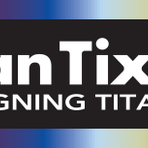Steel Giants Unite: The Nippon Steel and U.S. Steel Merger
June 14, 2025, 10:02 am

Location: United States, Pennsylvania, Pittsburgh
Employees: 10001+
Founded date: 1901
Total raised: $240M
In a bold move that echoes through the steel industry, President Donald Trump has given the green light to Nippon Steel's $14.9 billion acquisition of U.S. Steel. This merger is not just a business deal; it’s a seismic shift in the landscape of American manufacturing. The agreement, finalized on June 13, 2025, marks the culmination of an 18-month saga filled with hurdles, negotiations, and political maneuvering.
Nippon Steel, Japan's steel titan, will take full control of U.S. Steel, a company that has been a cornerstone of American industry for over a century. This deal promises to inject $11 billion into U.S. operations by 2028, aiming to revitalize a sector that has faced significant challenges in recent years. The investment is not merely a lifeline; it’s a strategic play to position Nippon Steel at the forefront of the U.S. market, especially as American infrastructure projects ramp up.
The approval process was anything but straightforward. It faced fierce opposition from labor unions and underwent two national security reviews. Initially blocked by the Biden administration, the deal was revived under Trump, who signed an executive order allowing it to proceed. This shift highlights the political volatility surrounding foreign investments in critical industries. The merger's approval is a testament to the changing tides in U.S. economic policy, where national security concerns often clash with the desire for foreign capital.
The agreement includes a "golden share" arrangement, which grants the U.S. government a degree of control over key decisions. This aspect has raised eyebrows and questions about the balance of power in the new entity. U.S. Senator David McCormick has voiced concerns, suggesting that this arrangement could complicate management decisions. The golden share is a double-edged sword; it provides a safety net for national interests but could stifle operational flexibility.
Nippon Steel's strategy is clear. By acquiring U.S. Steel, it aims to tap into the growing demand for high-grade steel in the U.S. market. This demand is fueled by a surge in infrastructure projects and a protective tariff environment that shields domestic producers from foreign competition. With a 50% tariff on steel imports, Nippon Steel is poised to capitalize on a market ripe for growth. The merger allows Nippon Steel to sidestep hefty breakup fees and solidify its presence in a lucrative market.
However, the deal is not without its critics. Some investors within Nippon Steel express concerns about the financial strain of the massive investment commitment. The initial excitement over the merger is tempered by apprehension about the short-term financial implications. The road ahead may be rocky, as the company navigates the complexities of integrating U.S. Steel's operations while meeting its ambitious investment goals.
The Japanese government has welcomed the merger, viewing it as a step toward strengthening economic ties between the U.S. and Japan. This sentiment reflects a broader strategy to enhance cooperation in key industries. The partnership is seen as a way to bolster innovation and competitiveness in both countries' steel sectors. As global trade tensions rise, this merger could serve as a model for future collaborations between American and Japanese firms.
Despite the optimism, the merger's approval was not a foregone conclusion. Trump's earlier comments about the deal created confusion, with mixed signals about the extent of U.S. control. The political landscape surrounding the merger was fraught with uncertainty, as both major political parties sought to appeal to voters in key states like Pennsylvania, where U.S. Steel is headquartered. The tug-of-war between economic interests and political considerations underscores the complexities of modern business transactions.
As the dust settles on this monumental deal, the implications for the steel industry are profound. The merger could reshape the competitive landscape, forcing other players to adapt or risk being left behind. Nippon Steel's entry into the U.S. market may trigger a wave of consolidation as companies seek to fortify their positions in an increasingly competitive environment.
In conclusion, the Nippon Steel and U.S. Steel merger is more than just a financial transaction; it’s a strategic alliance that could redefine the future of steel manufacturing in America. With significant investments on the horizon and a commitment to innovation, this partnership has the potential to revitalize a struggling industry. However, the challenges ahead are formidable. Balancing national interests with corporate ambitions will be crucial as these steel giants forge a new path in the American landscape. The merger is a reminder that in the world of business, as in life, the strongest partnerships can emerge from the most tumultuous journeys.
Nippon Steel, Japan's steel titan, will take full control of U.S. Steel, a company that has been a cornerstone of American industry for over a century. This deal promises to inject $11 billion into U.S. operations by 2028, aiming to revitalize a sector that has faced significant challenges in recent years. The investment is not merely a lifeline; it’s a strategic play to position Nippon Steel at the forefront of the U.S. market, especially as American infrastructure projects ramp up.
The approval process was anything but straightforward. It faced fierce opposition from labor unions and underwent two national security reviews. Initially blocked by the Biden administration, the deal was revived under Trump, who signed an executive order allowing it to proceed. This shift highlights the political volatility surrounding foreign investments in critical industries. The merger's approval is a testament to the changing tides in U.S. economic policy, where national security concerns often clash with the desire for foreign capital.
The agreement includes a "golden share" arrangement, which grants the U.S. government a degree of control over key decisions. This aspect has raised eyebrows and questions about the balance of power in the new entity. U.S. Senator David McCormick has voiced concerns, suggesting that this arrangement could complicate management decisions. The golden share is a double-edged sword; it provides a safety net for national interests but could stifle operational flexibility.
Nippon Steel's strategy is clear. By acquiring U.S. Steel, it aims to tap into the growing demand for high-grade steel in the U.S. market. This demand is fueled by a surge in infrastructure projects and a protective tariff environment that shields domestic producers from foreign competition. With a 50% tariff on steel imports, Nippon Steel is poised to capitalize on a market ripe for growth. The merger allows Nippon Steel to sidestep hefty breakup fees and solidify its presence in a lucrative market.
However, the deal is not without its critics. Some investors within Nippon Steel express concerns about the financial strain of the massive investment commitment. The initial excitement over the merger is tempered by apprehension about the short-term financial implications. The road ahead may be rocky, as the company navigates the complexities of integrating U.S. Steel's operations while meeting its ambitious investment goals.
The Japanese government has welcomed the merger, viewing it as a step toward strengthening economic ties between the U.S. and Japan. This sentiment reflects a broader strategy to enhance cooperation in key industries. The partnership is seen as a way to bolster innovation and competitiveness in both countries' steel sectors. As global trade tensions rise, this merger could serve as a model for future collaborations between American and Japanese firms.
Despite the optimism, the merger's approval was not a foregone conclusion. Trump's earlier comments about the deal created confusion, with mixed signals about the extent of U.S. control. The political landscape surrounding the merger was fraught with uncertainty, as both major political parties sought to appeal to voters in key states like Pennsylvania, where U.S. Steel is headquartered. The tug-of-war between economic interests and political considerations underscores the complexities of modern business transactions.
As the dust settles on this monumental deal, the implications for the steel industry are profound. The merger could reshape the competitive landscape, forcing other players to adapt or risk being left behind. Nippon Steel's entry into the U.S. market may trigger a wave of consolidation as companies seek to fortify their positions in an increasingly competitive environment.
In conclusion, the Nippon Steel and U.S. Steel merger is more than just a financial transaction; it’s a strategic alliance that could redefine the future of steel manufacturing in America. With significant investments on the horizon and a commitment to innovation, this partnership has the potential to revitalize a struggling industry. However, the challenges ahead are formidable. Balancing national interests with corporate ambitions will be crucial as these steel giants forge a new path in the American landscape. The merger is a reminder that in the world of business, as in life, the strongest partnerships can emerge from the most tumultuous journeys.
